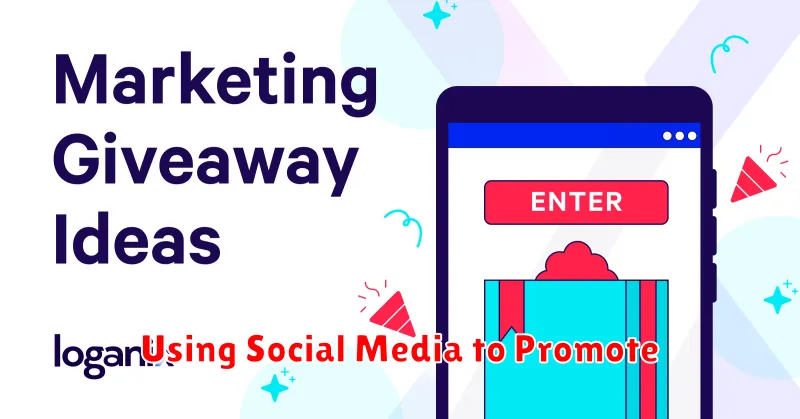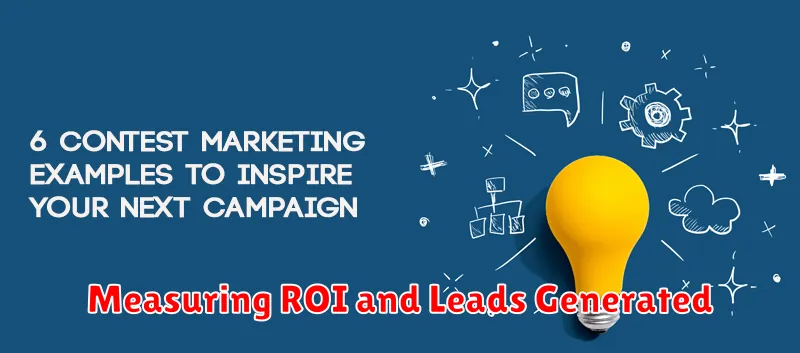Looking to boost your business growth and amplify your brand presence? A well-executed giveaway can be a highly effective strategy. Giveaways generate excitement, attract new customers, and enhance engagement with your existing audience. This article will provide a comprehensive guide on how to run a successful giveaway, covering everything from setting clear objectives and choosing the right prize to promoting your giveaway and analyzing the results. Learn how to leverage the power of giveaways to drive business growth, increase brand awareness, and achieve your marketing goals. Discover the essential steps to crafting a giveaway that not only attracts participants but also delivers tangible business results.
In the competitive landscape of today’s market, standing out from the crowd is crucial. Giveaways offer a unique opportunity to capture attention, generate buzz, and foster a sense of community around your brand. By offering desirable prizes and creating an engaging experience, you can effectively attract new followers, generate leads, and drive traffic to your website or social media platforms. This guide will delve into the key elements of a successful giveaway, including selecting the right platform, crafting compelling entry methods, and ensuring legal compliance. Master the art of the giveaway and unlock its potential to fuel business growth and solidify your brand’s position in the market.
Benefits of Hosting Giveaways
Giveaways offer numerous advantages for businesses seeking growth. They are a powerful tool for increasing brand awareness and reaching a wider audience. By offering desirable prizes, businesses can generate excitement and attract attention from potential customers.
Giveaways can also boost social media engagement. Contests often encourage sharing and tagging, leading to increased visibility and organic reach. This heightened activity can translate into more followers and a stronger online presence.
Furthermore, giveaways are effective for generating leads. By requiring participants to provide contact information, businesses can collect valuable data for future marketing efforts. This information can be used to nurture leads and convert them into paying customers.
Finally, giveaways contribute to driving sales. Increased brand awareness and engagement often translate into higher conversion rates. Giveaways can also create a sense of urgency and encourage immediate purchases.
Setting a Clear Objective
Before launching a giveaway, define a specific, measurable, achievable, relevant, and time-bound (SMART) objective. What do you want to achieve with this campaign?
Common objectives include:
- Increase brand awareness: Introduce your brand to a wider audience.
- Grow your social media following: Gain more followers on platforms like Instagram, Facebook, or Twitter.
- Generate leads: Collect email addresses for future marketing efforts.
- Drive traffic to your website: Encourage visits to your website to explore products or services.
- Boost sales: Increase sales of a specific product or service.
A clear objective will guide your giveaway design and help you measure its success.
Choosing the Right Prize
Selecting the right prize is crucial for a successful giveaway. The prize should be relevant to your target audience and desirable enough to motivate participation. A prize that aligns with your brand and the interests of your potential customers will attract the right kind of entries.
Consider offering a high-value prize to generate significant interest. This could be a single grand prize or several smaller prizes. Multiple prizes can broaden the appeal and encourage more entries.
Think about what your ideal customer would truly value. Is it a gift card, a product bundle, a free service, or an experience? The right prize can significantly impact the success of your giveaway.
Entry Methods That Drive Engagement
Choosing the right entry methods is crucial for maximizing engagement. Simple entry methods encourage more participation. Consider requiring actions that benefit your business, such as follows, likes, or email sign-ups.
Social media actions like sharing the giveaway post or tagging friends can significantly expand your reach. Bonus entries for additional actions can further incentivize participants and boost engagement. Offering bonus entries for actions like visiting your website or signing up for a newsletter can be highly effective.
Using Social Media to Promote

Social media is a powerful tool for promoting your giveaway and reaching a wider audience. Choose the right platforms for your target demographic. Instagram and TikTok are excellent for visually-driven giveaways, while Facebook and Twitter can be effective for reaching a broader audience. Consider using LinkedIn for professional giveaways.
Craft engaging posts with clear instructions on how to enter. Use relevant hashtags to increase visibility and encourage sharing. A visually appealing post with high-quality images or videos can significantly impact engagement. Regularly update your followers on the giveaway’s progress and remind them of the deadline.
Creating a Landing Page or Form
A dedicated landing page or form is essential for collecting entrant information. This centralized hub streamlines the entry process and allows for efficient data management.
Key elements to include:
- Clear title and giveaway details
- Entry form with required fields (e.g., name, email)
- Concise explanation of rules and regulations
- Attractive design and branding
Consider using a form builder or landing page software to simplify the creation process. Keep the form short and focused to avoid overwhelming potential participants and encourage higher conversion rates. Ensure the page loads quickly for a positive user experience.
Running the Giveaway Legally
Giveaways are subject to various laws and regulations depending on your location. It is crucial to ensure your giveaway complies with all applicable federal, state, and local laws to avoid legal issues.
Key areas to consider include registration and bonding requirements (where necessary), advertising disclosures, and prize limitations. Clearly stating the rules, eligibility criteria, and entry methods is essential for transparency and legal compliance.
Consulting with a legal professional specializing in promotions and sweepstakes is strongly recommended, especially for large-scale giveaways. They can advise on the specific legal requirements for your jurisdiction and help you structure your giveaway accordingly.
Choosing a Winner Transparently
Transparency is key to a successful giveaway. It builds trust and credibility with your audience. Clearly communicate the selection process beforehand. Will you use a random number generator? A panel of judges? Explain the criteria.
Document the winner selection. A screenshot or video of the process can be helpful. Announce the winner publicly and promptly. This demonstrates fairness and reinforces the legitimacy of your giveaway.
Following Up After the Giveaway
Post-giveaway follow-up is crucial for maximizing your return on investment. Don’t just announce the winner and move on.
Thank all participants. A simple “thank you” message shows appreciation and fosters goodwill. This can be a general message to everyone who entered.
Connect with the winner. Arrange prize delivery and encourage them to share their win on social media. This generates further buzz and social proof.
Analyze the results. Review the data collected during the giveaway. How many people entered? Which platforms performed best? This informs future campaigns.
Measuring ROI and Leads Generated

Measuring the return on investment (ROI) of your giveaway is crucial to understanding its effectiveness. Calculate ROI by dividing the net profit generated from the giveaway by the total cost of running it. This includes the prize value, advertising costs, and any platform fees.
Tracking leads is equally important. A successful giveaway should expand your audience and potential customer base. Monitor metrics like new followers on social media, email sign-ups, and website traffic during and after the giveaway period. Analyze how many of these leads convert into paying customers to gauge the long-term impact.

